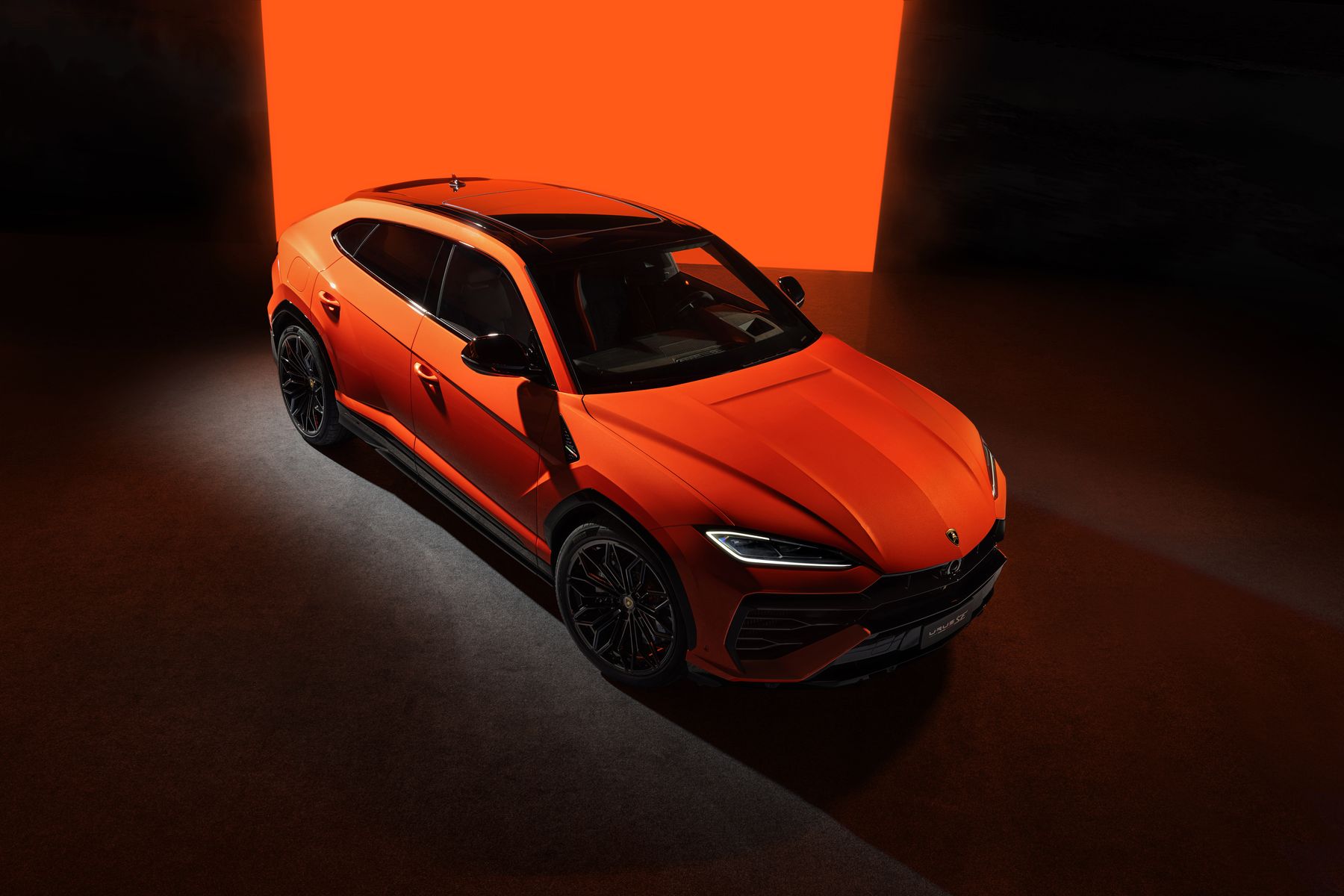Following the Porsche Cayenne, the Lamborghini Urus also receives a plug-in hybrid model with its latest update. We have already taken this 588 kW / 800 hp powerhouse for a spin.
How do you drift a 2.5-tonne vehicle with 588 kW / 800 hp across ice? For the plug-in hybrid version of the Lamborghini Urus, the answer is simple. By turning off all control systems including ESP, steering sharply, and then firmly pressing the accelerator. Suddenly, the rear of this powerful crossover swings out. Counter-steering and rhythmic pumping of the accelerator keep this towering part-time electric vehicle on a drifting course. It feels great and manageable. Even when making quick turns, this powerful SUV never leaves the driver guessing about its intentions. That’s exactly how it should be. A ride on snow and ice satisfies just the playful urge, right? Wrong! “Proper calibration at low friction is the foundation for a good setup,” explains Lamborghini’s Technical Chief Dr. Rouven Mohr.
This statement is intriguing at first glance. After all, the Lamborghini Urus as a plug-in hybrid is an update, and its technical base comes from the Porsche Cayenne. So, rewrite a bit of software, adjust the suspension differently, and that’s it? Not at all. The PHEV version is new to the Urus model range and replaces the Urus S. Thus, the demands for agility and dynamics are high. To achieve these, the Italian technicians have made adjustments at several crucial points. The all-wheel drive is particularly critical. Now, like Porsche, Lamborghini uses a hang-on version with an electronically controlled multi-plate clutch, engaging the front axle only when necessary.
This whole package is enhanced by rear-wheel steering that turns the wheels up to five degrees, active roll stabilization, and an electronic differential lock (e-Diff) on the rear axle. This system is designed to provide the Urus with more traction and agility than before. For example, the all-wheel drive pushes more power to the front at the start of a corner and opens the e-Diff to stabilize the vehicle. At the apex, the power shifts back to aid rear rotation. Appropriately, the e-Diff is closed, pushing power to the outer wheel. At corner exit, the clutch closes while the e-Diff is open, generating maximum traction. “Our car dances along the ideal line,” explains Rouven Mohr about the fundamental tuning philosophy, which is not about absolute best times on the racetrack, but about playful driving pleasure.

This is also reflected in the driving modes, where Sport allows for more fun than Corsa (race track). On the circuit, throttle response is sharper, the suspension is firmer, and the rear is kept more in check. Targeted deployment of the electric motor also contributes to this variable dynamic equation. Thanks to electrification, the PHEV Urus has eleven configuration possibilities. In addition to the two dynamic settings mentioned, there will be a hybrid and a purely electric setting. Other familiar driving modes include Strada (street), Sabbia (sand), Terra (earth), and Neve (snow).
All the engineering effort would be futile if the drive system couldn’t keep up with the sophisticated power distribution. With a maximum torque of 950 Newton-meters and the mentioned system output of 588 kW / 800 hp, the Urus PHEV is well equipped. The driving force comes from the V8 biturbo producing 456 kW / 620 hp and the electric motor delivering 141 kW / 192 hp (compared to the Cayenne PHEV with GT package at 441 kW / 600 hp and 130 kW / 177 hp).

For agility reasons, like the Cayenne, the battery has a capacity of 25.9 kilowatts, which provides the Urus with a purely electric range of more than 60 kilometers.
To ensure this range is effective, the Italians have placed the Urus in the wind tunnel. Compared to its predecessor, the rear generates 35% less lift. This is also noticeable in the design. The refreshed Urus features cleaner lines with fewer edges and creases. Cooling efficiency has improved by 15%, and braking efficiency by 30%. Thus, the new Urus comes to a stop from 100 km/h in 33.5 meters, 20 centimeters less than the Urus S. The electrified Urus also outpaces the S version in acceleration, as the power-to-weight ratio is 3.13 kilograms per hp, 200 grams less than the Urus S. From a standstill, the PHEV Urus reaches 100 km/h in 3.4 seconds (S: 3.5 sec), 200 km/h in 11.2 seconds (Urus S: 12.5 sec), and tops out at 312 km/h.


























